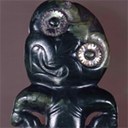0194 Curios and Taonga: Early Māori Collections in Berlin and Their Representation in the Museum für Völkerkunde (now Ethnologisches Museum)
Identifiers (Article)
Identifiers (Files)
Abstract
This article gives an overview of the very early collections of Māori artefacts in Berlin. These encompass the collections assembled by Johann Reinhold and Georg Forster and others on the famous voyages of James Cook to the South Seas at the end of the eighteenth century, but also objects collected by the North American captain Hadlock at the beginning of the nineteenth century. Later a wide range of German visitors reported from their tours through New Zealand and brought back artefacts and photographs. This paper points out the provenances of the core areas of the Māori collection in Berlin and retraces some shifts in the collecting practices as well as in the museum installations. It will be shown how the perception and evaluation of these objects changed and how they became symbols of identity in the course of the nineteenth and twentieth century.
Statistics


License

This work is licensed under a Creative Commons Attribution-NonCommercial-NoDerivatives 4.0 International License.



